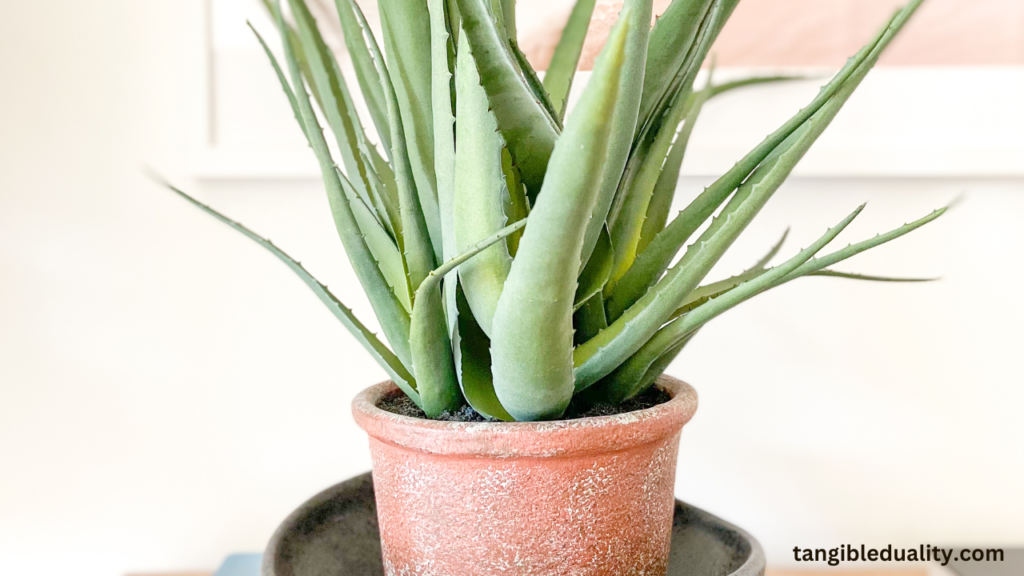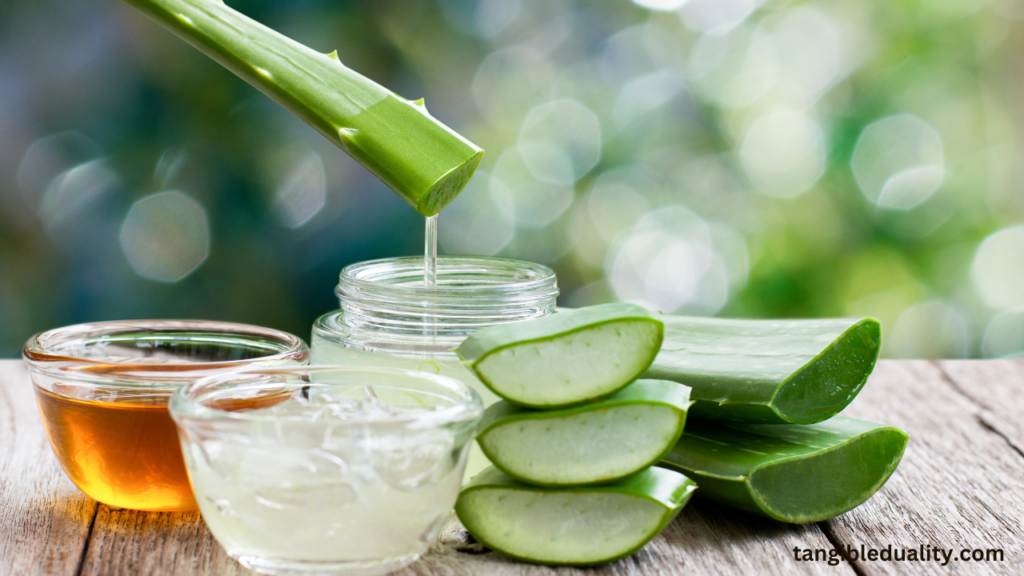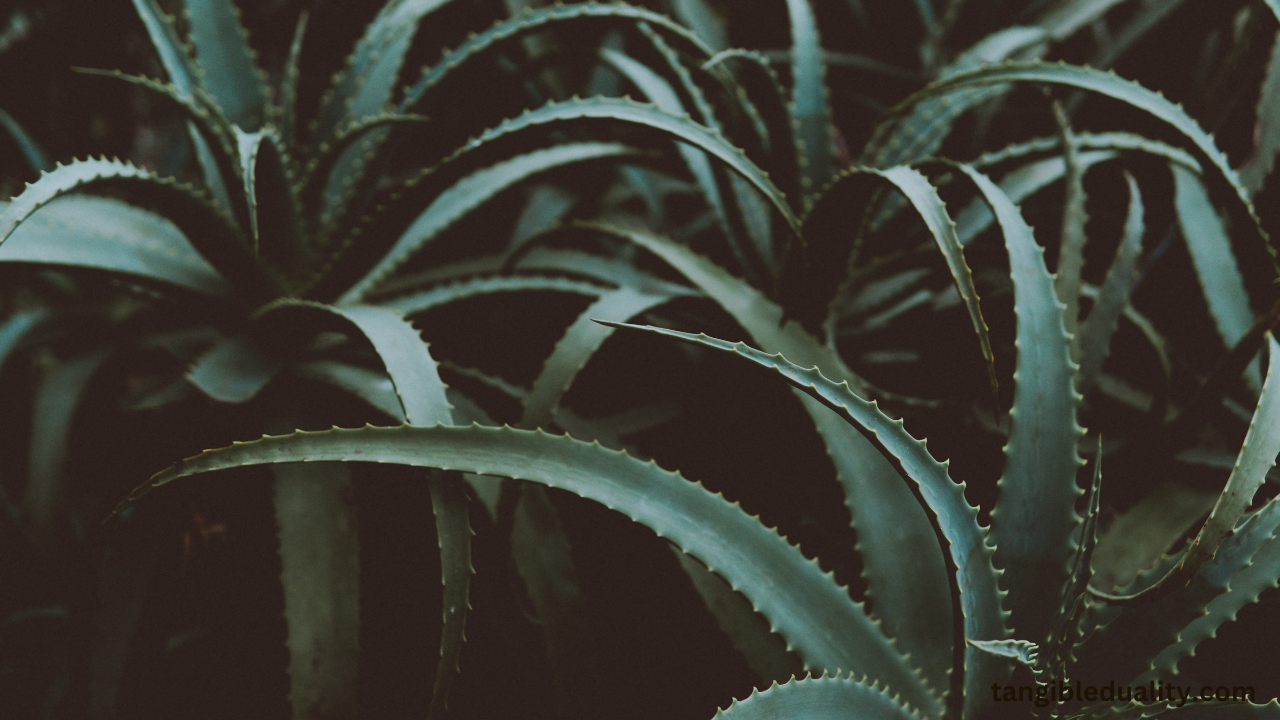Aloe vera plants are well-known not only for their curative qualities but also for their ease of care and capacity to flourish in both indoor and outdoor environments.
Whether you want to create a calming interior sanctuary or add a touch of greenery to your outdoor garden, aloe vera is a great choice for both novice and professional gardeners because it is adaptable and requires little maintenance.
Place indoor aloe vera plants on windowsills exposed to sunlight or under artificial grow lights to ensure sufficient sunlight for good growth. They also require soil that drains properly to avoid root rot.
Additionally, they require only a small amount of watering, which makes them an excellent option for people who tend to forget about their plants. In the vast outdoors, aloe vera plants flourish in hot and dry regions, and they are an excellent addition to desert landscaping or gardens that can withstand dryness.
Within the scope of this essay, we will investigate the most effective methods for cultivating and tending to aloe vera plants, whether they are grown indoors or outdoors.
You will discover everything you need to know to properly produce and maintain these beautiful and healthy plants, from the correct watering strategies to the advantages of utilizing aloe vera gel.
When it comes to the adaptable and advantageous aloe vera plant, it is vital to provide it with the appropriate care to ensure its growth and well-being. To guarantee that your aloe vera plant survives, it is essential to have a thorough awareness of its special requirements, regardless of whether you are growing it indoors or outdoors.

How to Properly Care for Your Aloe Vera Plant
One of the critical aspects of caring for your aloe vera plant is managing its watering needs. Aloe vera plants are succulents, meaning they store water in their leaves. It is essential to water your aloe plant sparingly, allowing the soil to dry out between waterings to prevent overwatering, which can lead to root rot.
Choosing the right pot for your aloe plant is another critical factor in its care. A well-draining pot, such as a terra cotta pot, is ideal for aloe vera as it prevents waterlogging and promotes healthy root growth. Make sure the pot has drainage holes at the bottom to avoid water accumulation.
When it comes to indoor aloe plant care, placement is critical. Aloe vera plants require bright, indirect sunlight to thrive indoors. Place your plant near a sunny window but away from direct light to prevent sunburn. Rotate the plant occasionally to ensure even growth.
Steps to Successfully Repot an Aloe Vera Plant
Knowing when your aloe vera plant needs repotting is crucial to its health. Signs that indicate the need for repotting include roots growing out of the drainage holes, the plant becoming root-bound, or the soil breaking down. Repotting your aloe plant is best done in the spring when it is actively growing.
Proper techniques for repotting your aloe plant involve gently loosening the root ball and placing it in a slightly larger pot with fresh, well-draining potting soil. Avoid burying the leaves in the soil, as this can lead to rot. Water the plant lightly after repotting to help it settle into its new home.
Selecting the correct potting soil for repotting aloe vera is crucial for its growth. A cactus or succulent mix works well for aloe plants as it provides the proper drainage and aeration the plant needs to thrive.
Common Issues and How to Troubleshoot Aloe Vera Problems
Identifying and treating aloe vera rot is essential to save your plant from irreversible damage. Symptoms of rot include mushy leaves, dark spots, and a foul smell. To address rot, remove the affected parts of the plant, repot it in fresh soil, and adjust your watering frequency.
Dealing with pests on your aloe plant, such as mealybugs or aphids, can be challenging. Inspect your plant regularly for signs of infestation, like sticky residue or webbing. Treat pests by wiping them off with a cloth soaked in soapy water or using insecticidal soap.
Preventing overwatering and underwatering of aloe vera is crucial for its overall health. To avoid overwatering, let the soil dry out between waterings and water the plant sparingly. Underwatering can lead to shriveled leaves and stunted growth, so ensure your aloe plant receives adequate hydration.

Various Methods to Propagate Aloe Vera Plants
Propagation of aloe vera can be done through various methods, including separating aloe vera pups from the mother plant. Aloe pups are small offshoots that grow at the base of the plant and can be carefully detached and repotted to grow into new plants.
Harvesting aloe vera leaves for propagation involves selecting mature, healthy leaves and allowing them to callus over for a few days before planting. Plant the leaf cuttings in well-draining soil and water sparingly until new roots develop.
Using offsets, which are small plantlets that grow alongside the mother plant, is another successful way to propagate aloe plants. Carefully remove the offsets and plant them in their pots, following the same care regimen as mature aloe plants.
Growing Aloe Vera Outdoors: Best Practices and Tips
When growing aloe vera outdoors, providing optimal sunlight and temperature conditions is crucial for its growth. Aloe plants thrive in full sun but can tolerate partial shade. Ensure your outdoor aloe plants receive at least six hours of sunlight daily to promote healthy growth.
Fertilizing your aloe vera for maximum outdoor growth is essential to replenishing nutrients in the soil. Use a balanced fertilizer diluted to half-strength during the plant’s active growing season. Avoid overfertilizing, as this can lead to nutrient imbalances and plant stress.
Protect your outdoor aloe plants from harsh weather conditions such as frost or excessive rainfall. If temperatures drop below 50°F (10°C), consider moving your aloe plants indoors or covering them with a frost cloth to prevent damage. Ensure proper drainage to avoid waterlogging during heavy rains.
Conclusion
Growing and caring for aloe vera plants, whether indoors or outdoors, is easy and satisfying. If you pay attention to what they need, these plants can do well in many different places and offer many benefits.
Aloe Vera plants need soil that drains well, lots of sunshine, and careful watering to grow well indoors and outdoors. You can put them near sunny windowsills inside, and they do best outside in warm, sunny spots that are out of the way of the hot afternoon sun.
It’s important to water plants regularly, but don’t overwater them or they will get root rot. Aloe Vera plants can handle not getting enough water and like it when they dry out between waterings, especially in the cooler months.
A balanced, diluted fertilizer is used rarely during the growing season to keep the soil healthy.
Repotting may be needed periodically to make room for the growth of indoor plants. Dividing outdoor plants periodically usually keeps them from getting too crowded.
Aloe vera plants are low-maintenance additions to any home or yard. They are not only beautiful to look at but also helpful because they can heal you. If you give these tough plants the care and attention they need, they can grow well and give you years of pleasure.
FAQs
Q: How do I care for my aloe plant indoors?
A: To care for your aloe plant indoors, place it in a sunny location, water it sparingly every 2-3 weeks, and ensure the pot has good drainage.
Q: What are the common issues with aloe plants?
A: Common issues with aloe plants include overwatering, underwatering, and pests such as mealybugs or scale insects.
Q: What types of aloe plants can I grow?
A: There are over 500 species of aloe plants, but some popular ones for cultivation inclu

